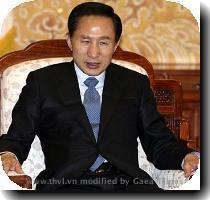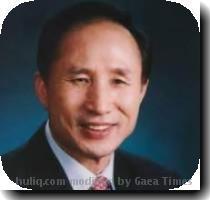SKorea defense minister says torpedo blast likely sank warship, as country mourns victims
By Hyung-jin Kim, APSunday, April 25, 2010
SKorea mourns victims of ship blast
SEOUL, South Korea — South Korea’s president Monday bemoaned the “precious deaths” of dozens of sailors killed when an explosion destroyed their warship, as suspicion increasingly fell on a North Korean torpedo blast in the disaster.
Defense Minister Kim Tae-young said Sunday that an underwater explosion appeared to have ripped apart the 1,200-ton Cheonan on March 26, and that a torpedo blast seemed the most likely cause. Investigators who examined salvaged wreckage separately announced Sunday that a close-range, external explosion likely sank it.
The government has been careful not to blame the North outright, and Pyongyang has denied its involvement, but suspicion has focused on the North given the country’s history of provocation and attacks on the South.
Makeshift altars have been set up across South Korea for a five-day mourning period that opened Sunday to honor victims aboard Cheonan. President Lee Myung-bak visited one of the shrines at a plaza in Seoul on Monday to pay his respects.
“The Republic of Korea will never forget your precious deaths,” Lee wrote at a condolence book at the mourning station, according to South Korean media pool reports.
Last week, a tearful Lee said in a nationally televised speech that South Korea will respond “resolutely and unwaveringly” against anyone responsible for the blast.
The defense minister told reporters Sunday that a likely cause of the disaster was the “bubble jet effect,” which refers to the rapidly expanding bubble an underwater torpedo blast can create and the subsequent destructive column of water unleashed.
“Basically, I think the bubble jet effect caused by a heavy torpedo is the most likely” cause, Kim said.
However, Kim did not speculate on who may have fired the weapon and said an investigation was continuing and that it’s still too early to determine the cause.
The Cheonan was on a routine patrol before the explosion sank it in one of South Korea’s worst naval disasters. Forty bodies have been recovered so far, but six crew members are still unaccounted for and are presumed dead.
The site of the sinking is near where the rival Koreas fought three times since 1999, most recently a November clash that left one North Korean soldier dead and three others wounded. The two Koreas are still technically at war because their 1950-53 Korean War ended in a truce, not a peace treaty.
Also Sunday, investigators said a preliminary investigation of the front part of the 1,200-ton ship — retrieved the day before — pointed to an external explosion.
Chief investigator Yoon Duk-yong told reporters that an inspection of the hull pointed to an underwater explosion. He appeared to support the bubble jet effect theory, saying, “It is highly likely that a non-contact explosion was the case rather than a contact explosion.”
But he, too, said it was too early to determine what caused the explosion.
Tags: Accidents, Asia, East Asia, Explosions, Koreas, Lee Myung-bak, North Korea, Seoul, South Korea, Transportation



